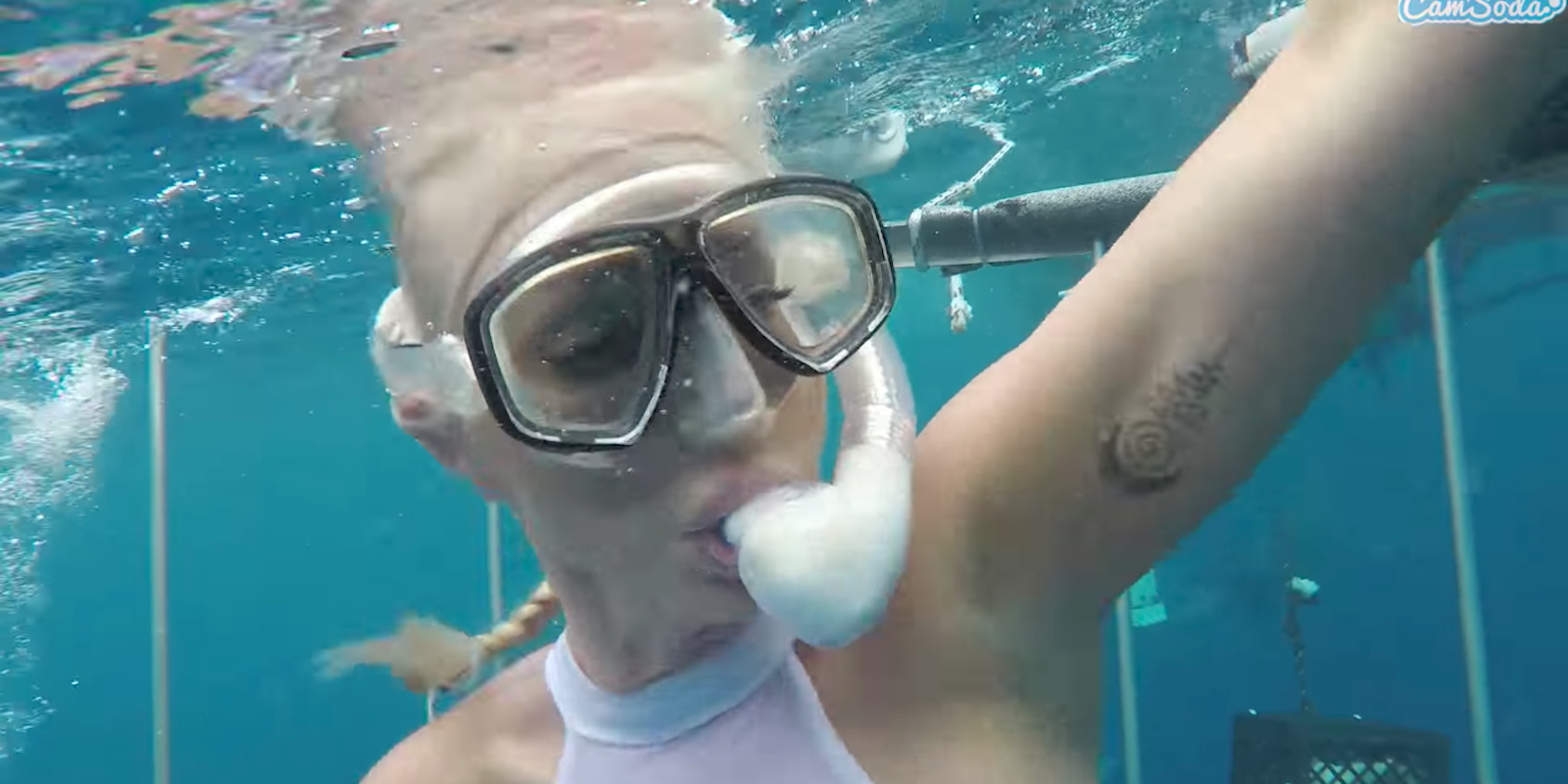Rarely is pornography reflective of real life, and all these people coming out against CamSoda’s shark bite video further proves it.
Last week, cam site CamSoda published a video of an underwater livestreaming session gone wrong, then viral. According to the video, their model Molly Cavalli was bitten by a shark while in a shark cage floating off the coast of Florida, and needed 20 stitches on her foot to close the wound. There were initial suspicions that something about the video was off, but now divers and shark experts have come to fully debunk this shark smear campaign.
According to Bryce Rohrer, owner and operator of Florida Shark Diving, CamSoda and Cavalli had staged the attack as a publicity stunt, and had reached out to Rohrer for help two months earlier. Rohrer told RealClearLife and the Palm Beach Post that Cavalli laid out their plans to fake the attack, and that once he understood their plans, the company declined to assist.
A text message screenshot provided to the publications shows part of an image of a foot, then the text, “Just wanted to show you what the bite would look like. It’s more of a little knick … I know that you are shark lovers and don’t want it to be a negative thing on sharks but I just wanted to show you that it’s not some huge aggressive a bite [sic] if that makes any difference.”
Florida Shark Diving has worked with National Geographic and Discovery Channel’s “Shark Week” to promote positive messages about sharks and their protection, and Rohrer has called CamSoda’s viral video “unnecessary” and “unhealthy.”
“I’ve been working with sharks my entire adult career, 300 days a year, I’m on the water diving with sharks. They’re incredible animals, they’re a cornerstone species, meaning they need to be in the oceans at a somewhat healthy level, or else the entire ecosystem literally breaks down,” Rohrer said. “So many people these days are working towards saving sharks and the environment is in such a focus right now … when someone comes up with a fake shark attack it just kind of is a blow to all that work.”
Even if Rohrer’s story didn’t check out, other shark experts have come out against the alleged attack, saying that the wound seen in the video isn’t from a shark at all.
“I can tell you for a fact, it was not a shark bite,” George Burgess, a shark-bite investigator and keeper of the International Shark Attack File, told the Post. “How it was inflicted is conjectural, but the main thing is, the injury is not a shark bite. It was a PR stunt, and it worked.”
Stephen Kajiura, a shark researcher at Florida Atlantic University, and R. Dean Grubbs, associate director of research at Florida State University’s Coastal and Marine Laboratory, told the Post that the foot wound was inconsistent with real shark bites. Shark bites tend to be arcs since their teeth are in a semi-circle pattern, so it wouldn’t have looked like that thin, long gash, and there are typically multiple slashes because more than one tooth would be used.
“For a wound that deep, one would expect to see multiple parallel slashes from teeth, not a single slash,” Kajiura said. “It makes more sense that she was cut on the side of the cage, then blamed the sharks for the publicity.”
CamSoda and Cavalli didn’t return requests for comment from both the Palm Beach Post and the New York Post.
H/T Newsco.com.au


